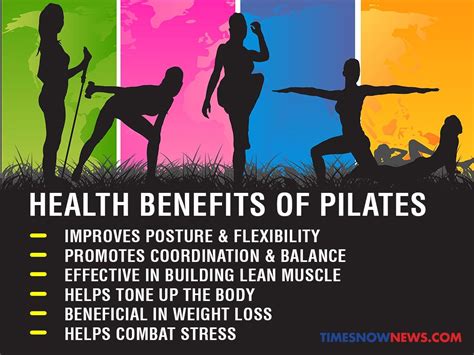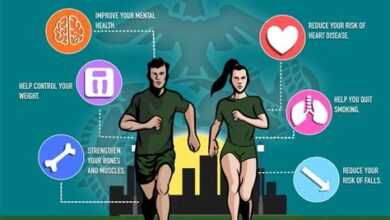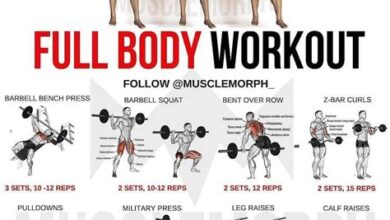The Benefits of Pilates for Physical Health

Discover how our program can help improve posture, flexibility, core strength, and balance while reducing injury risk. Reach your fitness goals!Pilates is a popular form of exercise that has been gaining attention for its numerous benefits to physical health. From improved posture and alignment to increased flexibility and range of motion, Pilates offers a holistic approach to strengthening the body and reducing the risk of injury. In this blog post, we will explore the various ways in which Pilates can positively impact your physical well-being. We’ll discuss how it can enhance core strength and stability, leading to better balance and coordination. Additionally, we’ll delve into the ways in which Pilates can help prevent injuries and improve overall body alignment. Whether you’re a fitness enthusiast or someone looking to improve their overall physical health, Pilates may be the perfect addition to your wellness routine. Join us as we uncover the incredible benefits of Pilates for your body and mind.
Improved Posture and Alignment
Improved Posture and Alignment
Pilates is known for its ability to improve posture and alignment through targeted exercises that strengthen the muscles supporting the spine and pelvis. By emphasizing proper alignment and good posture, Pilates helps individuals become more aware of their body position and make adjustments to correct any imbalances. As a result, participating in regular Pilates classes can lead to a more upright, aligned posture that reduces strain on the muscles and joints. This can have a significant impact on overall physical health and wellbeing.
In Pilates, exercises are focused on engaging the core muscles and promoting a natural, neutral spine position. This approach helps individuals develop a stronger and more stable core, which is essential for maintaining good posture and alignment. As a result, participants often experience reduced back pain and improved spinal health as a direct result of their Pilates practice. The strengthening of the core muscles also provides essential support for the spine and helps to prevent slouching and rounded shoulders, leading to better overall posture and alignment.
Another key aspect of Pilates is the emphasis on controlled, precise movements that require full body integration. This focus on whole-body coordination and alignment helps individuals become more aware of how their body moves and how they hold themselves. By developing a greater understanding of proper alignment and movement patterns, participants can apply these principles to their daily activities, leading to improved posture and alignment in all aspects of their lives. Overall, Pilates provides a holistic approach to enhancing physical health, with improved posture and alignment being just one of the many benefits it offers.
Increased Flexibility and Range of Motion
Pilates is a form of exercise that focuses on improving flexibility and increasing the range of motion in the body. By practicing Pilates regularly, individuals can experience significant improvements in their flexibility, allowing them to move more freely and with less discomfort. This is especially beneficial for individuals who may be experiencing stiffness or tightness in their muscles and joints.
One of the key principles of Pilates is to elongate and strengthen the muscles, which can help to improve flexibility. The exercises in Pilates are designed to target specific muscle groups and promote a full range of motion, leading to increased flexibility over time. As individuals continue to practice Pilates, they may notice that their flexibility improves, making everyday movements easier and more comfortable.
Increased flexibility can also have a positive impact on overall physical health. It can help to reduce the risk of injury, as flexible muscles and joints are less likely to become strained or overworked. Additionally, improved flexibility can lead to better posture and alignment, as the body is able to move more freely and with greater ease. By incorporating Pilates into their fitness routine, individuals can experience the many benefits of increased flexibility and range of motion.
Enhanced Core Strength and Stability
Enhanced core strength and stability are two of the key benefits of practicing Pilates regularly. Pilates focuses on strengthening the deep muscles in the abdomen, back, and pelvic floor, which are essential for providing stability and support to the spine. By targeting these muscles, Pilates helps to improve overall core strength, leading to better posture and reduced risk of back pain and injury.
In addition to strengthening the core muscles, Pilates also helps to improve stability and balance. The exercises in Pilates require focused control and careful precision, which in turn helps to enhance stability and coordination. This is beneficial not only for physical health, but also for improving overall body awareness and mindfulness.
Overall, by enhancing core strength and stability, Pilates offers a holistic approach to physical health, helping individuals to build a strong foundation for all other movements and activities, both in everyday life and in athletic endeavors. This makes Pilates a valuable and effective practice for individuals looking to improve their overall physical health and fitness.
Reduced Risk of Injury
Pilates is a form of exercise that focuses on strengthening the body’s core muscles, which in turn helps to improve overall stability and reduce the risk of injury. By targeting the deep muscles of the abdomen, back, and pelvic floor, Pilates helps to improve posture and alignment, which can prevent strain on the muscles and reduce the likelihood of injury during physical activities.
In addition to strengthening the core muscles, Pilates also helps to promote flexibility and range of motion in the body. This increase in flexibility can help to prevent muscle imbalances and tightness, which are common causes of injury. By regularly practicing Pilates, individuals can improve their overall body awareness and reduce the risk of overuse injuries by promoting balanced muscle development.
Furthermore, Pilates emphasizes the importance of proper breathing techniques, which can help to reduce stress and tension in the body. This focus on mindful breathing and relaxation can contribute to a more efficient movement pattern, reducing the risk of injury during physical activities. Additionally, the controlled and precise movements of Pilates help to improve balance and coordination, which can further decrease the risk of falls and other accidents.
Better Balance and Coordination
Improved balance and coordination are two significant benefits of practicing Pilates. The focus on core strength and stability in Pilates helps to improve overall balance, making it easier to maintain a stable and centered position during various physical activities. This can be particularly beneficial for older adults or individuals recovering from injuries, as it reduces the risk of falls and other balance-related accidents.
Furthermore, Pilates exercises are designed to enhance proprioception, which is the body’s ability to sense its position in space. By improving proprioception, individuals can better control their movements and maintain proper coordination during daily activities and exercise routines. This can lead to more efficient and effective workouts, as well as a reduced risk of injury due to improved body awareness.
Incorporating Pilates into a regular fitness routine can also help individuals develop a greater sense of body awareness, allowing them to move more fluidly and gracefully. This improved balance and coordination can have a positive impact on overall physical health, as well as enhance performance in other sports and activities.





